Free Call

Send Us A Message

3822 Campus Dr #300-B, Newport Beach
Loving a partner who struggles with addiction is one of the hardest things to experience. It feels isolating, confusing, and overwhelming. The pain you experience can pile even higher when the person you love refuses to get help.
If your partner with addiction won’t agree to treatment, you’re not alone, and you’re not powerless. This guide will walk you through what to do when an addict refuses help by giving you honest and compassionate advice to navigate the emotional weight of it all.
Intervention boundaries are limits set during addiction interventions. They protect the emotional, mental, and physical health of everyone involved. These limits create structure and reduce risk during conflict or crisis.
Boundaries define what is acceptable during the intervention process. They also help maintain trust, safety, and communication. Without boundaries, interventions can lead to shame, resentment, or relapse.

Boundaries reduce the pressure on families. They prevent emotional outbursts and blame. This makes room for productive conversation and goal-setting.
Clear limits protect the patient’s dignity. They also help families avoid enabling behavior. A professional interventionist often guides this process to ensure structure and consent are respected.
Emotional Boundaries
These protect feelings like grief, anger, and shame. Emotional limits prevent emotional manipulation or guilt-tripping. They reduce victim mentality and protect autonomy.
Physical Boundaries
Physical distance and space must be respected. Intense conversations shouldn’t escalate into physical conflict. Respecting these boundaries supports physical intimacy and safety in relationships.
Verbal and Language Boundaries
Hurtful words destroy trust. Language used during an intervention should be respectful. Clear feedback and assertiveness are more effective than judgment or sarcasm.
Relational Boundaries
Couples therapy teaches relational boundaries well. During interventions, these rules guide family and marriage dynamics. They support long-term sobriety and prevent neglect or emotional abuse.

Common violations include yelling, threats, or emotional blackmail. These actions disrupt safety and stress management. They often lead to relapse or withdrawal from treatment.
Another violation is breaking promises. Families may agree to stop enabling but continue to offer money or housing. This undermines the intervention’s purpose and weakens the recovery network.
Start with Clear Intentions
Every boundary should support a recovery goal. Focus on values like truth, autonomy, security, and understanding.
Use a Boundary Worksheet
A worksheet helps adults and families list specific limits. It helps everyone agree on expectations. Education around this tool increases awareness and accountability.
Include the Whole Community
Boundaries are stronger when reinforced by others. A support network—friends, therapists, and community groups—can hold the line together.
A professional interventionist understands context and structure. They introduce dialectical behavior therapy techniques to manage stress and emotions. They guide conversations with empathy and skill.
This expert ensures the patient gets the right medication or treatment. They connect families with mental health professionals and resources like Narcotics Anonymous or crisis intervention teams.
Addiction Interventions is a trusted provider of professional intervention services that help families take action when a loved one struggles with substance abuse. Their interventionists use structured techniques rooted in positive psychology, stress management, and dialectical behavior therapy to establish clear boundaries that reduce conflict and support recovery. These boundaries guide families in stopping enabling behaviors, reinforcing consent, and protecting their own mental health throughout the process.
The team at Addiction Interventions emphasizes personal development, autonomy, and emotional awareness. They equip families with practical tools—such as worksheets, skill-building exercises, and referrals to therapy or treatment centers—to prevent relapse and rebuild trust. By focusing on accountability and community support, their approach helps addicts and families define values, set goals, and create long-term change grounded in sobriety and truth.
After an intervention, boundaries continue through treatment. These boundaries include check-ins, progress updates, and healthy expectations. This maintains motivation and accountability.
In couples or family therapy, partners learn to honor each other’s needs. This includes respecting time, emotional space, and individual healing. Positive psychology tools like meditation, yoga, and physical activity help maintain energy and identity.
Assertiveness is different from aggression. It allows adults to speak truthfully while showing empathy. Assertiveness supports consent and prevents emotional neglect.
In interventions, assertiveness maintains trust. It validates feelings while encouraging change. It promotes understanding instead of blame.
Without structure, stress builds. Addicts often return to substance use when boundaries break down. Neglect, shame, or family pressure can trigger old behaviors.

Strong boundaries serve as relapse prevention tools. They hold addicts accountable while offering support. Boundaries also guide medication routines, therapy attendance, and abstinence from drugs or alcohol.
Words shape reality. Clear language improves perception and behavior. Saying “I feel disrespected when you lie” is more effective than “You’re always lying.”
Using direct and neutral phrases can reduce conflict. Language should reflect mutual goals—safety, hope, healing, and sobriety. This supports personal development and emotional regulation.
Be Consistent
Changing the rules confuses everyone. Stick to the agreed limits even when it’s difficult. This builds trust and reduces the risk of enabling.
Validate Feelings
Let the addict express desire, anger, or fear. Acknowledge the feeling without changing the boundary. This balances empathy with firmness.
Practice Self-Care
Families must manage their own stress, too. Exercise, meditation, and feedback from mental health professionals can preserve energy and focus. Personal health supports long-term involvement in recovery.
Boundaries help families face reality. Not every addict enters treatment immediately. But clear boundaries reduce emotional damage and help patients feel supported, not punished.
Holding to boundaries requires belief in the process. Interventions can restore security and hope through consistency and mutual respect.
Dialectical behavior therapy (DBT) teaches mindfulness and emotional control. These skills help families and addicts respond, not react. DBT also includes stress management and conflict resolution tools.
DBT improves feedback, attention, and emotional awareness. These tools support families who may be dealing with grief, shame, or bipolar disorder. This therapy builds lasting behavior change.
Boundaries lead to personal growth. They encourage self-reflection and autonomy. Families learn to stop neglecting their needs to “save” the addict.
Patients also grow by learning accountability. Boundaries challenge victim mentality and push for action. This creates an identity rooted in value, not addiction.
Being Too Vague
Unclear limits don’t help anyone. For example, saying “Be better” lacks direction. Instead, try “Attend three therapy sessions weekly.”
Expecting Immediate Change
Change is gradual. Adults and families should focus on consistency. Intervention is the beginning—not the finish line.
Avoiding Conflict
Boundaries sometimes cause tension. That’s normal. The goal is not to avoid conflict but to manage it with skill and empathy.
Respecting someone’s choices is part of recovery. Patients must choose treatment and sobriety. Boundaries offer guidance without controlling.
Autonomy doesn’t mean approval. It means letting someone face the result of their actions. This supports long-term behavior change and mental health recovery.
Boundaries must move beyond the intervention setting. This includes routines, communication, and family expectations. A worksheet or shared goal sheet can help maintain focus.
In couples therapy, boundaries guide physical intimacy and communication. These tools help married couples rebuild trust and connection post-treatment.
During a crisis, boundaries should stay in place. Emotional outbursts or threats may test the family. But giving in can reverse progress.
Crisis intervention professionals can help manage these moments. They support both the addict and the family in de-escalation. This preserves safety and commitment.
Boundaries are not punishment. They are a form of positive structure. They offer addicts and families a path forward rooted in truth and security.
With guidance from a mental health professional, families can continue to grow. Intervention boundaries are the foundation of lasting sobriety and change. They protect identity, reduce relapse risk, and restore hope.
Boundaries are healthy limits set to protect well-being and encourage change. Ultimatums are rigid demands often made under pressure and can feel controlling. Boundaries focus on long-term values while ultimatums tend to escalate conflict.
Yes, but it’s harder. Professional guidance offers structure, education, and accountability. Without it, families may struggle to apply feedback or manage emotional stress effectively.
Yes. Boundaries continue through recovery. They help manage relapse risk, ensure follow-through on treatment, and protect emotional and physical health.
Boundaries create a sense of security and predictability for children. They reduce chaos, prevent emotional neglect, and model healthy relationship dynamics.






© 2025. Addiction Interventions. All Rights Reserved